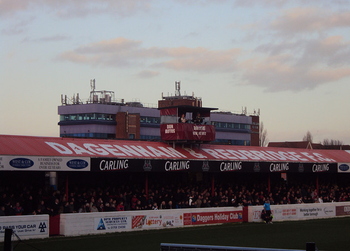
Football is a sport that is beloved around the world, with billions of people calling themselves a supporter at one time or another.
Some of them are casual fans, only tuning in with any real interest when the World Cup or European Championship rolls around, whilst others are passionate in their love of their club and travel anywhere and everywhere to watch them play. Even the smallest club will likely have hundreds of supporters.
Of course, not every team has enough fans to make it worth their while building a behemoth the equivalent of Wembley or Old Trafford. Instead, some clubs know that they will almost certainly never outgrow the small stature of their initial existence, spending any available money developing what is there rather than expanding what they have.
Here’s a look at some of the smallest stadiums in the United Kingdom by capacity.
What Is The Difference Between A Ground & A Stadium?
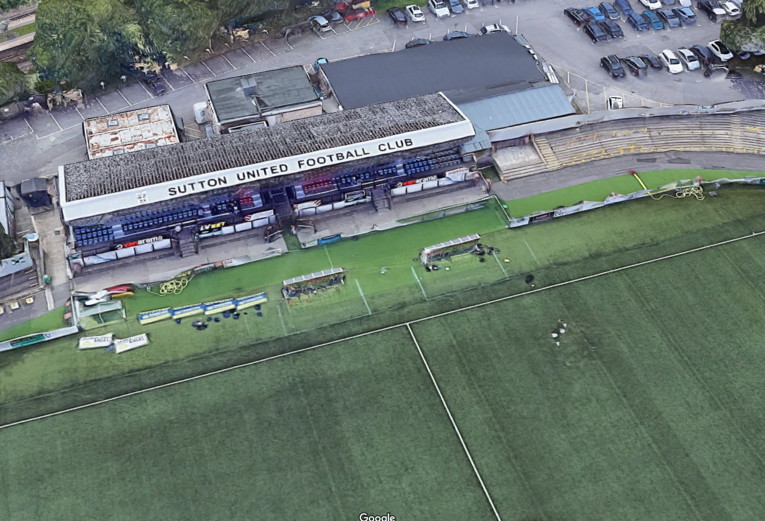
Before we look at the various venues that have made it onto our list, it’s worth exploring the idea of why some of them are referred to as football stadiums and some as football grounds.
The reality is that there is no specific definition, though some might say that a football ground refers to the entire location and a stadium is specifically in reference to the physical building that people sit in to watch a game being played.
For most people, the word ‘ground’ is used to describe something smaller and less all-encompassing than a stadium. Wembley is a stadium, for example, as is The Emirates. You would be hard pushed to find people saying that Sutton United play in a stadium rather than a ground.
It is not a perfect definition, but it seems as though scale is the deciding factor when it comes to referring to one over the other, though for most it’s an interchangeable word.
How Football Grounds Grow
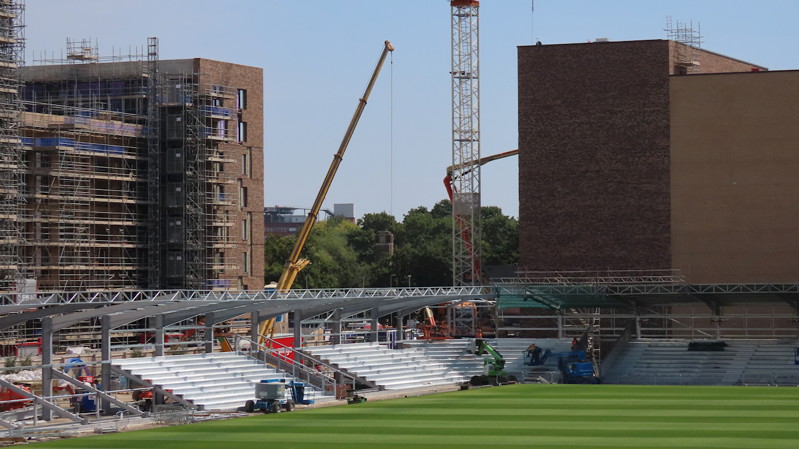
In the vast majority of cases, a football club’s first home ground started as little more than a grassy area surrounded by somewhere that supporters could watch the events unfold from. As the team became more popular, the desire to make these areas more permanent grew, with grandstands being built to accommodate supporters. After a time, the club’s administrative offices might be moved to the ground too, requiring further expansion.
Depending on the success of the team, the likes of a museum or club shop may be needed, so they will be built to compliment what is already there. As the team’s success continues or grows, more and more people will want to turn up to watch them play. Initially, the area housing supporters will have been made to exceed demand, but when demand begins to grow the seating areas have to grow to accommodate it.
From the smallest beginnings, large stadiums can soon become a reality. This is typically based on one of two things: the success of the club concerned or the money available to develop the club’s infrastructure. During the 2019-2020 season, for example, Manchester City’s average attendance for football matches was 37,097, but the wealth of the club’s owners meant that they could afford to have a capacity of 55,017.
All of the stadiums on this list, which might be called football grounds by most of the supporters of the clubs that use them, could one day grow to become footballing palaces. It all depends on the future success of the sides that play their games in them and the amount of money that their owners are willing to invest in the infrastructure. If it’s not needed, it usually won’t be built, but if it is then expansion will be necessary.
The Stadiums
Rather than look purely at the stadiums that have the smallest capacities in the English Football League, we’ve decided to explore some of the more interesting stories.
DEAN COURT – Bournemouth
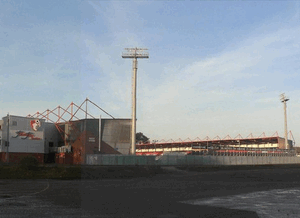
With a capacity of 11,364, it’s fair to say that Dean Court isn’t even close to being the smallest stadium in the English Football League. That title goes to the likes of Eppleton Colliery Welfare Ground or Park Hall in Oswestry, both of which have room for about 2,000 supporters. What makes Dean Court interesting, though, is the fact that it remained at the same sort of size even when Bournemouth were enjoying relative success.
Perhaps the owners of the Cherries believed in the mantra ‘this too shall pass’, not wanting to over-extend themselves when Eddie Howe took the club through various promotions to get them in to the Premier League. Not only did he get them there, Howe also managed to keep them there for five seasons, which is impressive when you consider the size of the club and the relatively small amount of money invested in it.
The stadium itself grew out of land that had previously been an old gravel pit, donated to Boscombe F.C. in 1910. Players had to change in a nearby hotel initially, indicating just how small-scale the operation was back then. There was only a 300-seater stand initially, with purchases of fittings from the British Empire Exhibition allowing for a 3,700 seat stand to be built in the 1920s. The record attendance was set in 1957 when 28,799 watched an FA Cup match against Manchester United.
Feast and famine will forever by the watchword for the smaller clubs in the Football League, with a mere 1,879 people turning up to watch a 2-2 draw with Lincoln City in 1986. The biggest change came in 2001 when the stadium was completely rebuilt, including the rotation of the pitch by 90 degrees. It reopened with a capacity of 9,600, expanding to its current capacity in the years that followed. It might have been expanded further had they continued to enjoy success in the Premier League, showing how fickle the development of football grounds can be.
KINGSMEADOW – London
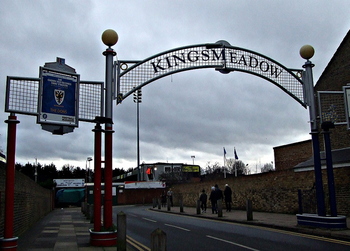
At the time of writing, Kingsmeadow isn’t actually used for professional football matches in the English Football League. Instead, it is the home of Chelsea Women and Chelsea’s Under-23s side, having previous been where the phoenix club of AFC Wimbledon played its games before moving to Plough Lane. With enough room for 4,850 people, of which 2,265 can be seated, it is definitely on the smaller side.
It’s on the list because of the interesting nature of its story, having been used by the semi-professional football team of Kingstonian F.C. between 1989 and 2017. AFC Wimbledon began using it as soon as the club was formed in 2002, which occurred when Wimbledon Football Club moved to Milton Keynes and became the MK Dons. That meant that the Dons played there when they were promoted to the Football League in 2011.
It’s also interesting to note because the club’s owners decided against expanding Kingsmeadow when they began to enjoy more and more success, instead moving to Plough Lane where they enjoy a capacity of 9,300 with the ability to expand it to 20,000. Where AFC Wimbledon have chosen to move is as much a part of the story of the ground as its own existence in terms of this article, given what it tells us.
Kingsmeadow was originally built to have a capacity of 6,299, with modern safety requirements seeing that figure drop down to 4,850. It was sold to Chelsea in 2015, allowing the London club to use it for their youth team as well as giving the women’s side a proper ground of its own. Not exactly one of the best stadiums in the country, it is nevertheless one that tells stories about where youth football, women’s football and Football League clubs are all seen by their owners.
ADAMS PARK – High Wycombe
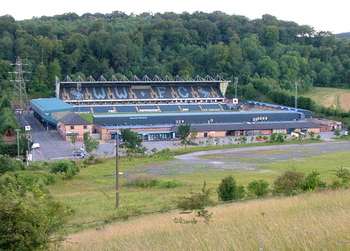
The full name of Adams Park is Adams Park Stadium, which perhaps indicates where the owners see the ground in the fend scheme of things. It has been the home of Wycombe Wanderers since 1990, which was when it was opened for the firs time. It is on the list because it replaced a former ground of Wycombe, with Loakes Park deemed not to be good enough for the club from the 1960s onwards.
As is so often the case, it took decades for a new venue to be decided upon and actually built. It was sold to the local health authority so that Wycombe Hospital could be developed, with the sale almost entirely funding the purchase of the new stadium. Located in an industrial estate that sits in a valley, it is two miles aware from the centre of Wycombe. Once again, stories about all sorts of things can be told by its existence.
Wycombe Wanderers’ desire to move to a bigger and more modern stadium was understandable, but in doing so they shifted it to a location that is harder to get to for the supporters and in a location that removes it from the locals. It had a capacity of 6,000 when it first opened, but there was at least room to develop it and expand it over the following years, which is what the club decided to do.
One of the biggest problems that faced Adams Park when it was initially expanded was the fact that its position in a valley meant that it was located on a dead-end road. As a result, there were problems with large numbers of people leaving at the end of a match. This reduces the likelihood of the stadium being expanded much past its current capacity, leading to the likelihood that Wycombe will have to move again if the club enjoys any sustained success.
BESCOT STADIUM – Walsall
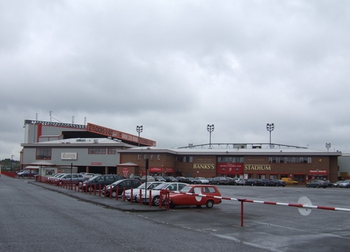
In terms of interesting stories, a football ground built within sight of the M6 motorway is certainly up there. That’s what Bescot Stadium offers, which opened its doors for the first time in 1990. The club had wanted to move from Fellows Park for some time, with the old ground considered to be antiquated and too difficult to develop. Instead, the purchase of the football club by Terry Ramsden promised an opportunity to spend money on a new ground, with a site at Bescot Crescent identified in 1988.
Building work began the following year, with Stanley Matthews opening it in 1990. To begin with, the two ends of the ground were standing areas, offering a capacity of 11,104, but in 1992 this was reduced to about 9,800 when the area assigned to away supporters was turned into an all-seated area. It became an all-seater stadium during the 2002-2003 season thanks to an extension of the Gilbert Alsop Stand, where home supporters were mostly located.
In 2005, plans were mooted to extend the stadium further in order to allow more away supporters to attend matches and thereby increase the capacity. The southern strand would be developed to become a replica of the northern stand, with the entire project paid for thanks to an advertising hoarding being placed on the stand that faced the M6 motorway. This would be the largest such hoarding adjacent to a motorway anywhere in Europe, but it was abandoned as an idea when the club failed to get back into the Championship.
That is, in many ways, football stadium development in a nutshell. When the football club was enjoying huge amounts of success, everyone involved wanted to see the ground expanded and plans were drawn up to allow such a thing to happen. When the success began to stop, the plans were abandoned and supporters stopped attending in such high numbers. It’s why success is such a key part of what football club owners wish to do.
Time and again, clubs are stopped from being able to carry out the changes that they’d like because on-field success doesn’t match the off-field ambitions. There’s not a lot that can be done about that, as we’ve seen when looking at Dean Court and Bescot Stadium, to name just two venues on our list. There are other football grounds that could have made this list, but the ones that we’ve opted for tell the story of what happens and why when it comes to football grounds being developed and improved upon.
